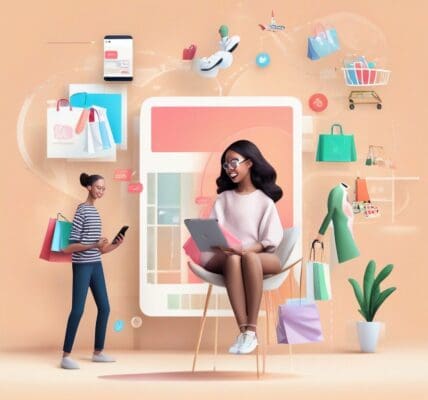The landscape of retail is shifting dramatically, propelled by technological advancements that blend the physical and digital realms. Among these innovations, augmented reality (AR) and virtual reality (VR) stand out as transformative tools that redefine the traditional “try-before-you-buy” model for consumers. As the COVID-19 pandemic has permanently altered shopping habits, online purchases now often overshadow in-store transactions. The integration of AR and VR technology offers a solution to the common challenges faced in e-commerce, particularly concerning product visualization and return rates.
Consumers increasingly embrace online shopping, with the journey often beginning in a virtual environment, regardless of whether they will ultimately shop in-store. According to EnterpriseAppToday, 63% of shopping journeys start online, which proves the importance of offering a seamless digital experience. However, a significant hurdle persists: the inability to physically engage with products before purchase. This limitation can lead to buyer hesitation and product returns, which are notably higher in e-commerce than in brick-and-mortar stores.
When shoppers can’t physically examine a product, they are more likely to experience uncertainty. A survey by Statista found that return rates for apparel can be as high as 23%. Not only does this high return rate reflect a loss for retailers—estimated at around $15 for every $100 spent online—but it also highlights how consumers are often stuck in the “bracketing” cycle, where they purchase multiple items intending to return most of them. A staggering 31% of American consumers admitted to bracketing clothing purchases due to sizing uncertainties. AR and VR technologies present a viable solution to this dilemma by providing a realistic and immersive shopping experience.
Enhancing the Online Shopping Experience with AR and VR
AR and VR technologies empower consumers to visualize products as if they were present in a physical store. Virtual try-on tools allow users to interact with items and see how they would look or fit in real-time, effectively mimicking the in-store experience. This immersive approach has the potential to increase purchase confidence, reduce returns, and ultimately lead to higher conversion rates.
For instance, AR can simulate sensory experiences that directly impact purchasing decisions. By allowing shoppers to visualize furniture in their homes or clothing on their bodies, retailers can address buyer hesitation effectively. AR apps, such as IKEA’s Place, let users see how different pieces of furniture look in their living spaces, enabling more informed decisions and reducing the likelihood of returns.
The integration of advanced technologies like computer vision, natural language processing (NLP), and machine learning enhances these AR and VR experiences. Computer vision tracks user movements and accurately positions virtual products within a real-world context. For example, in clothing retail, AR apps can display how a garment fits based on the user’s body shape and size. This technology not only improves visualization but also enhances customer satisfaction by reducing the chance of encountering sizing issues.
NLP further enriches the shopping experience by allowing users to interact with virtual assistants through voice commands. This feature introduces a layer of personalization, guiding consumers through product choices based on preferences and previous interactions. NLP can also increase accessibility for all customers, including those with disabilities, as features like text-to-speech and voice recognition help enhance their shopping journey.
Machine learning plays a crucial role as well, allowing retailers to personalize content recommendations and adapt to each shopper’s preferences. By analyzing user data, ML algorithms optimize the virtual environment to offer targeted product suggestions, making the shopping experience smoother and more engaging.
Real-World Applications of AR and VR
Leading retailers such as Walmart and Amazon are adopting these technologies to transform their e-commerce platforms. Walmart’s AR-powered “Beauty Virtual Try-On” and its recently expanded hair color options highlight how AP can enhance the shopping experience. Customers can select from multiple models and simulate their desired looks in real-time.
Amazon has also embraced AR technology, introduced this year, allowing customers to virtually try on sneakers, sunglasses, and cosmetics from renowned brands like Adidas and L’Oreal. This capability enables users to visualize products on themselves before committing to a purchase, helping to alleviate common concerns associated with online shopping.
Despite the promising future of AR and VR in retail, challenges remain. Issues related to data privacy, the need for high-quality 3D models, and the varying technical requirements for users could hinder widespread adoption. Nonetheless, the benefits of integrating these technologies far outweigh the obstacles.
Conclusion
As more consumers gravitate toward online shopping, the urgency for retailers to innovate their customer experiences increases. AR and VR technologies not only enhance product visualization but also influence purchasing behaviors and reduce return rates, leading to improved profitability and sustainability for businesses. By offering a digital experience that mimics the physical one, these technologies can transform e-commerce into an even more interactive and enjoyable journey.
As retailers continuously work to refine their online strategies, incorporating AR and VR solutions will be pivotal in ensuring a competitive edge in an increasingly digital marketplace.











